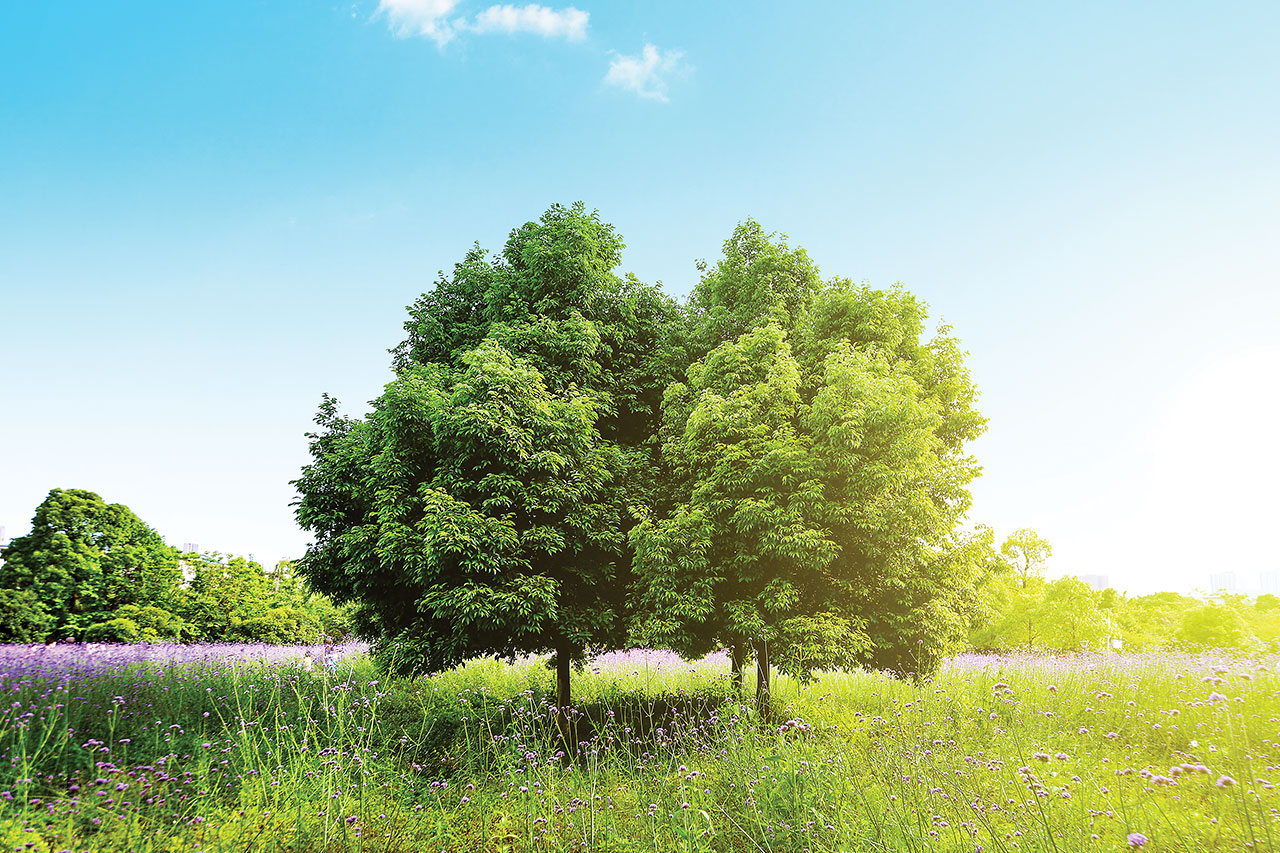
Current Shrimp Season Brings Uncertainty
June 12, 2019
Moist-Soil Management Featured at Wildlife Habitat Workshop
June 12, 2019At this intensely hot time of year, we like to remind people how important shade trees are in our landscapes. Even more, the hot summer months are the best time to determine where additional shade is needed.
Most of us know energy bills soar right along with the temperatures. But shade trees in the landscape can help us keep cooler while lowering utility bills. And the shade provided by trees often is the only thing that makes it possible to sit on a patio or deck during the day.
Shade trees play an important part in the concept of sustainable landscaping. Trees that shade the house during the summer can lower air-conditioning bills by blocking the sun from the windows, exterior walls and roof. Air conditioners cooling a fully shaded house have been shown to work only half as much as those in a house which has its walls and roof exposed to the sun. Other research reports show shade trees will reduce heat gains by 40 percent to 80 percent, depending upon their placement and density.
That means even a sparse shade tree may be a better energy saver than an interior curtain.
Deciduous trees, those that drop their leaves during the winter, generally are the best choices. These trees let the sun shine on the house during the winter when the sun’s added warmth is welcome. Then they provide shade during the summer when it is needed.
Evergreen trees, which retain their foliage through the year, provide constant shade – which generally is not desirable when it is cold. Evergreen trees do, however, provide good windbreaks for winter winds when they are planted to the north of the house.
The location of your shade trees is very important in how well they will help reduce energy consumption. Trees should be planted on the southwestern and western sides of the house to be most effective. Trees in those locations will shade the house from the most intense sun during the hottest part of the day. Planting trees to the south and east also will help shade the house.
Of course, this doesn’t mean you should completely surround your home in a forest of trees. People frequently plant too many trees on their property – not realizing how large they will become later on.
Trees also need to be planted the proper distance from the house, and away from concrete surfaced areas. Although house slabs generally are not affected, thinner concrete surfaces, such as patios, sidewalks and driveways, can be damaged by roots from trees planted too close. The recommended distances generally are related to the mature size of the tree. Larger trees, such as oaks, should be planted farther away from sidewalks, driveways and the house (at least 15 feet) than smaller trees like crape myrtles or yaupon hollies.
In addition to shading your home, decide on other areas where shade is necessary or desirable. Outdoor living areas are virtually unusable in Louisiana during the summer without some sort of shade. Properly planted trees can provide that shade. Choose small-growing trees for planting close to patios, since they are more in scale with the location and are less likely to damage surfacing materials.
When landscaping for energy conservation, deciding on the right placement, number and type of trees requires careful planning, but you have plenty of time to think about it. Although now is the time to make decisions on where shade is needed and where to plant the trees, don’t forget the ideal tree planting season in Louisiana is from November through February. •







